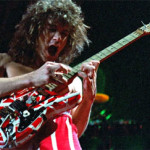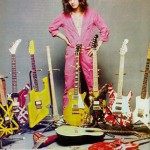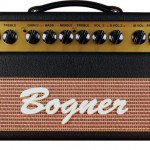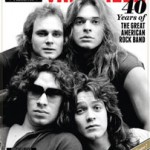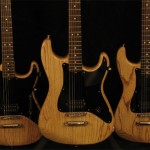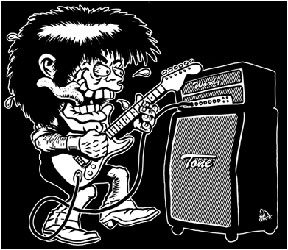The Key to Finding EVH’s Tone Secrets is…EVH

Yes, Edward Van Halen’s jaw-dropping tone has changed over the years. And yes, it’s been a lot of years since the first four or so Van Halen albums. But I have always believed that Ed – who obviously is a details guy, and a hands-on guy – remembers everything he ever did to get the tones he’s gotten.
Yes, Ed is known for misdirecting people over the years, but you can’t really have expected him to just confess all the tricks and mods he stumbled onto through tons of hard work. Not at the time, anyway. But he remembers all of it, and I have two more recent data points which point to that conclusion.
One is an email conversation I had semi-recently with a guy, a guitar-player, who grew up with Ed. Here’s some of what he said:
He was always a tinkerer with everything and he ruined many an effect or amp or guitar in his figuring out how they work and what works best. I admired him for that. I was always a bit afraid of destroying things I loved, so I would send the amps/guitars out for all work.
He was always someone who was tinkering with his rig. Most things he figured out for himself. I mean the guy had an attention span of 8 hours! He’d just go and go ’til he figured something out.
The second data point came from a recent Variety Magazine blog entry about a visit to Ed’s studio:
At 54, Edward Lodewijk Van Halen is still not a big picture guy. He does not encapsulate what his playing means to generation of followers, of how guitar design fits within his legacy, or even pinpointing the differences between his approach to the David Lee Roth material the first time around and again 20-odd years later. What he is remarkably capable of doing is remembering precisely how he recorded a specific sound, what went into building a guitar from factory seconds and the tweaks he has done over the years to everything from the screws to the tuning pegs.
Damn straight! And who will record those “remarkably precise” memories for posterity? I volunteer!
Some other cool items from the Variety piece:
It’s an intense, visceral thrill to stand next to Eddie Van Halen while he plays a series of riffs that pass at whip-cracking speed, each note articulated with clarity and purpose.
The song he is playing is a new one, a possibility for the next Van Halen album, work on which is expected to start in the summer. The tune makes effective use of his patented detuner, a metal bracket the size of a Tic-Tacs box at the tail of the guitar that alters the key he is playing in. He yanks on the device, the tonal quality shifts and I immediately hear a Pete Townshend influence. When he finishes, Van Halen’s comment is “it’s got an old Who thing in there.†It’s good to know we’re on the same page.
Ed: “It’s very basic, the way I mike things. I hate to say it, but it’s different from the ways others do it. I want the sound as pure as possible. It’s all in the way I mic things. It sounds brght over here, sounds dead over there. I used six mics on Alex’s drums once. Andy Johns walks in because he could only hear it and couldn’t see what was going on. ‘That’s an amazing drum sound,’ he says. ‘How’d you do that?’ I got on a ladder and listened everywhere. I hate to say it but its different from the ways others do it. Engineers know their pro-tools but don’t trust their ears. I don’t EQ. The more EQ you use and then try to remove it, you make it worse.”
Ed: “On the radio, they compress more. So if you compress too much on the master, it will sound like shit on the radio. I tend to try to not compress. It’s a gamble, a throw of the dice out there on the radio. I want the sound pure as possible. Compression tends to make the loudest thing stand out, and that’s usually the kick drum. Again all I go by is what sounds good to me. That applies to my instruments.”
Ed: “It’s kinda like a race car. My brother and I race all the time. It’s a very fine line between how one person will do it and another. You experiment until your lap time improves. It’s similar to reaching that elusive sound in your head. Let’s say your best lap time is 1:22. I’m down to 1:25 – only a few seconds behind, but in a race a long time. Say the guitar is at a 1:25, so the increments are more difficult. Going from 1:35 to 1:30 is easy if you have a natural instinct. Once you get down to (a competitive speed), no stone can be left unturned. Every little tiny aspect – tire pressure, what tires you use and how you brake – it all applies to the guitar. To make a better guitar, you really have to analyze every little thing if you want a high-performance guitar.
Category: Edward Van Halen





